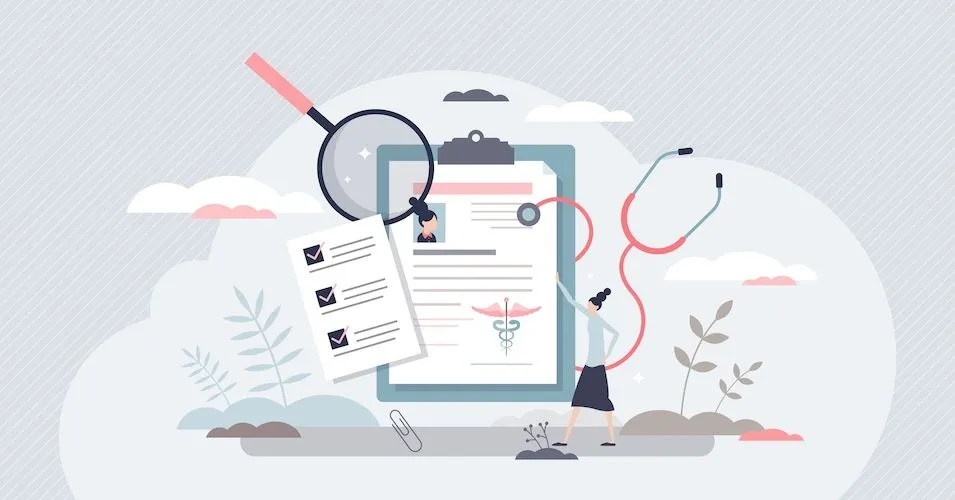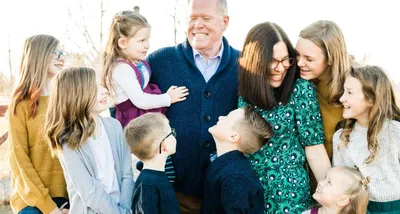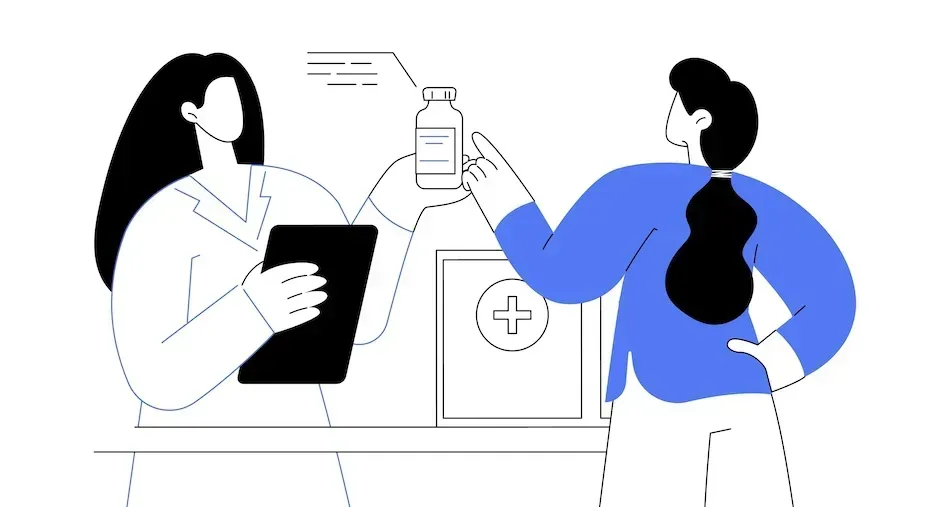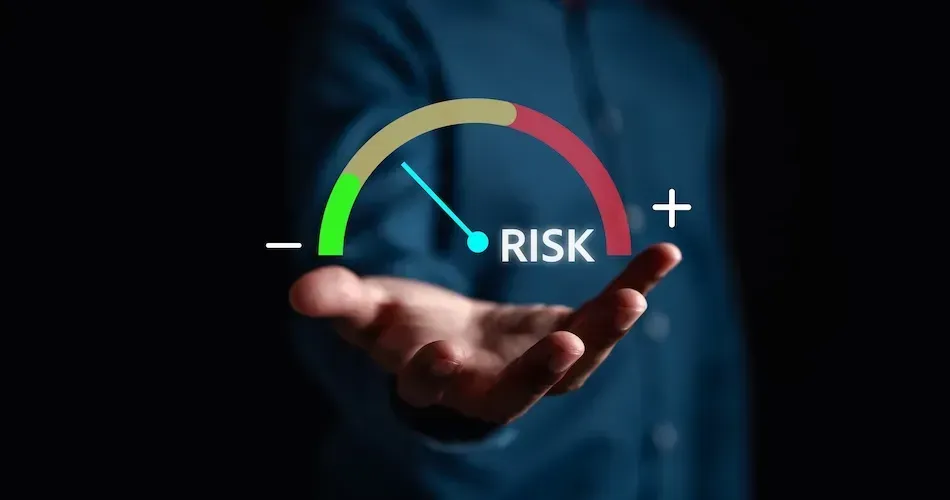Janice’s CLL Treatment Experience with Venclexta + Gazyva
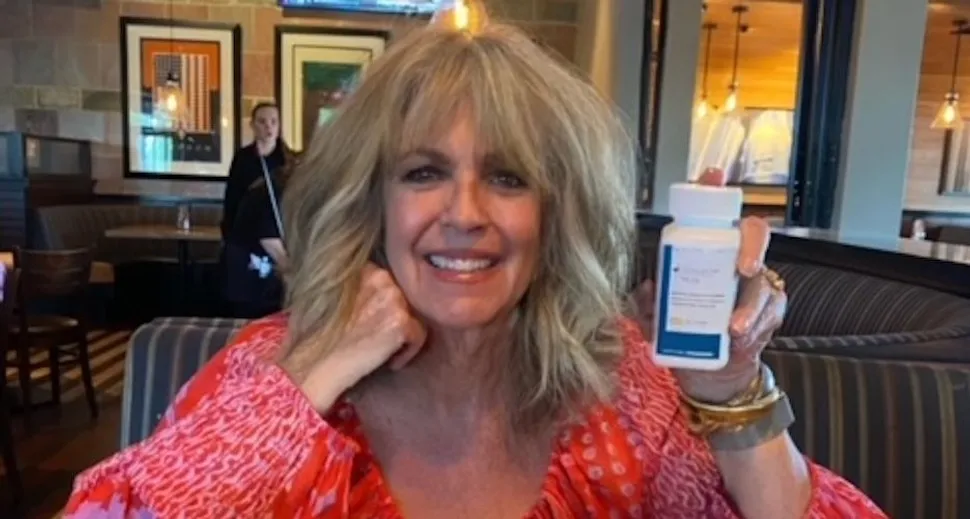
Janice was very kind to share her experience about being treated with CLL targeted therapy combination Venclexta (venetoclax) and Gazyva (obinutuzumab) with HealthTree. Below are the highlights from our conversation that can benefit other CLL patients.
Diagnosis and Deciding to Start Treatment
Janice was diagnosed with CLL about three years ago. Her CLL genetic features included intermediate risk trisomy 12 and higher risk unmutated IGHV. She spent 1.5 years in watch and wait before she and her general oncologist determined that Janice’s CLL had progressed to a point that needed treatment.
During the watch and wait period, Janice reached out to CLL expert Dr. Steven Coutre at Stanford. He did a series of tests to confirm the CLL diagnosis and agreed that the disease had not yet progressed far enough to join a clinical trial or start treatment. He stated that when Janice’s CLL signs and symptoms progressed to a point that she qualified for treatment, she could reach back out to him to review therapy options. Sadly, Dr. Coutre, also a CLL patient, passed away from complications of COVID-19 in November 2021.
When Janice experienced the advanced Rai staging signs and symptoms of enlarged lymph nodes and enlarged spleen, her general oncologist confirmed it was time to start treatment in August 2022. Janice decided to not meet with another CLL specialist after Dr. Coutre because she had full trust in her general oncologist. Her oncologist recommended Janice choose the standard of care for CLL, a one-year treatment cycle of Venclexta in combination with antibody infusion Gazyva. Based on the research Janice had done in her own time, she also agreed that this would be the best treatment for her.
First day of Gazyva Infusions - August 2022

Last day of Venclexta Tablets - September 2023, One Year Later
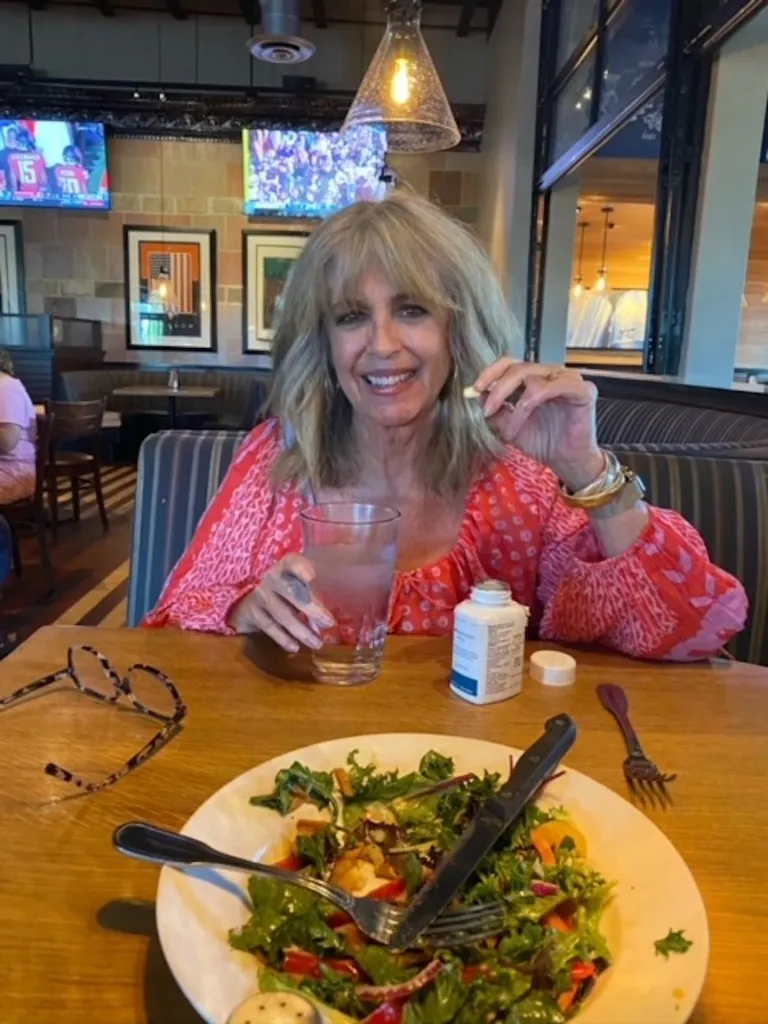
Achieving Complete Remission with Venclexta + Gazyva
“My oncologist told me to give her a year and she could put me into remission using Venclexta and Gazyva, and she did.” -Janice Brooks
In the picture below taken on October 8, 2023, Janice celebrates a perfect CT scan of no detectable disease, complete remission, and her 47th wedding anniversary in the wine country - Napa, CA. Congratulations Janice!
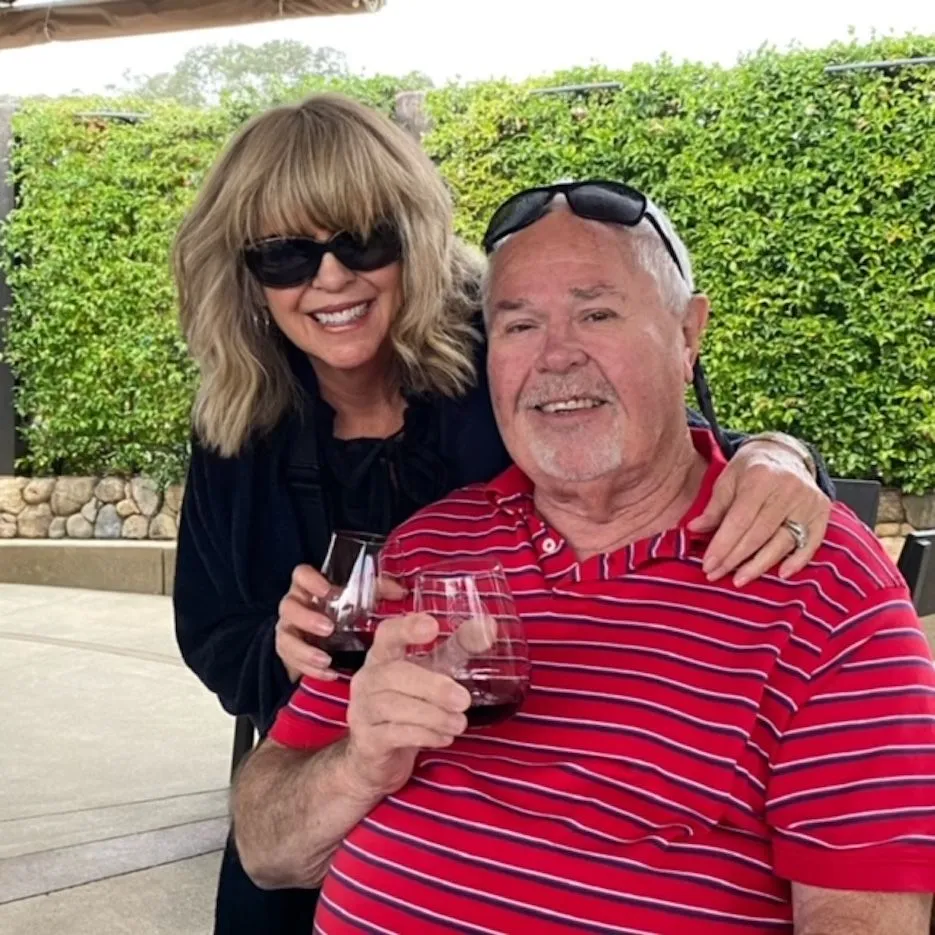
What was your treatment experience like?
Janice stated if she ever had to be treated for her CLL again, she would once again choose Venclexta. The pills were easy to take, and the side effects were manageable. The side effects she experienced included weight gain, mild sinus infections, and infrequent urinary tract infections. She did not experience any of the other side effects some CLL patients report while taking Venclexta such as nausea, water retention, or tumor lysis syndrome.
The side effect of weight gain Janice experienced, her oncologist denied it was tied to Venclexta treatment. Janice, however, saw many other CLL patients on social media boards also voicing concerns about experiencing 10-20 lbs of weight gain while taking Venclexta with no other lifestyle changes to diet and exercise during treatment.
Something we at HealthTree would like to do is conduct a patient survey using HealthTree’s online clinical trial survey platform - Cure Hub to get patient feedback about their experience with this side effect while taking Venclexta. That evidence can then be given to the CLL specialist community to investigate the causes of Venclexta and weight gain.
We can start to do surveys/studies like the above in the future once we get enough CLL patients who have signed up for Cure Hub. We invite you to sign up for Cure Hub here and help us in our goal of accelerating research to improve patient outcomes.
Bridging the Information Gap - Infections
One of the things Janice wishes her doctor would have notified her to be on the lookout for before she started treatment with Venclexta + Gazyva was an increased risk of infections and the reason why that could happen. She shared with me that was something she pieced together on her own to be related to the disease. Over the course of her treatment year, Janice experienced several mild infections from sinus issues to UTIs. When she asked her general oncologist about them, she stated it was because Janice was immunocompromised from the disease and would then prescribe an antibiotic.
Other infection-supportive measures would have been helpful to have known about such as being informed about what exactly she was at risk for, what to look out for, what she could take, and who to call for each side effect.
Now she knows that Venclexta kills cancerous B-cells (CLL) and healthy B-cells which are in charge of helping get rid of viruses and bad bacteria. So, with decreased B-cell levels, CLL patients have an increased risk of infections and will need supportive measures such as immunoglobulin infusions (IVIG), non-live versions of vaccines before treatment to help boost the immune system, and a variety of antivirals, antifungals, and antibiotics to protect the immune system before, during, and after treatment.
“It would have been nice to know what to expect and who to call for resources to fix things like the infections. Healthcare providers are so busy, but it would have been nice to get some printed materials at least to know what to expect”. -Janice
On HealthTree’s end, we’re committed to helping close these information gaps by creating written content such as articles, patient guides, videos, and more, to support patients to have the best qualify of life possible before, during, and after treatment. Patients can look forward to an event HealthTree will be hosting about infection prevention for CLL patients this upcoming January 10th, 2024. The registration page will be posted in mid-December on our events page. Our speaker is Dr. Meghan Thompson from the Memorial Sloan Kettering Cancer Center. Patients can join the HealthTree for CLL newsletter to be notified about the event's details.
Bridging the Information Gap - Side Effects of First Gazyva Dose
Another area that Janice wished her healthcare team would have communicated better about was the reaction to expect and how that would be handled with the first Gazyva infusion. Upon receiving her first Gazyva antibody infusion, her body experienced shallow breathing, flushing, and a rash after the first few minutes of the infusion. At first, Janice was not sure if she should speak up or not. She decided to tell her oncology nurse that she felt like something wasn’t right.
At that point, her care team stopped the infusion, administered oxygen and a steroid to Janice to stop the reaction, and waited 30 minutes. They told her the reaction was very normal and most patients’ bodies accepted the infusion after the waiting period. Janice decided to continue with the infusion after the waiting period and like her care team had said, there were no other complications afterward.
“It would have been nice to know that was to be expected so I knew what to look for and not feel uncertain if I should speak up or not. Patients need to not be afraid to speak up because if they’re experiencing those reactions, they do need to stop the infusion temporarily, treat you with a steroid, give you some oxygen, and then they can start it back up again with no more side effects. The body then goes, “Oh, I’ve had this before” with no more complications.”
Balancing Trust in her Healthcare Team and Being her own Advocate
Janice considers herself fortunate to have an attentive team of doctors who are mindful of her health. From her optometrist to her dermatologist, they are all aware of her condition and provide specialized care to the best of their ability.
Even though she feels that the members of her healthcare team are attentive and have her best interest in mind, it's always good to be personally aware of what is going on and advocate for oneself. Being proactive in scheduling and following up on appointments is critical. "You need to be your own advocate because they can't babysit you," she advised. We agree with Janice that patients who decide to learn as much as they can about their disease and are proactive in their treatment care have better treatment outcomes.
"I really appreciate my oncologist and her care team. They are the best. In their defense, they are busy - with other patients far worse off than me so they have limited time with each patient. That is why I can’t stress strongly enough for those of us with CLL to do our research. Also, go to your appointments with your lists of questions. Their time is limited so we need to make the most of each appointment."
Although Janice understands the value of being her own advocate, she also recognizes that having a strong caregiver is really beneficial. Janice's husband attended all of her appointments with her for support. She stated it was not because of necessity but because he wanted to be there to support her for every test result and doctor feedback session.
We are grateful for Janice taking the time to share with us her experience about being treated with Venclexta + Gazyva. We are confident her important insights can help many patients in the CLL community.
Janice was very kind to share her experience about being treated with CLL targeted therapy combination Venclexta (venetoclax) and Gazyva (obinutuzumab) with HealthTree. Below are the highlights from our conversation that can benefit other CLL patients.
Diagnosis and Deciding to Start Treatment
Janice was diagnosed with CLL about three years ago. Her CLL genetic features included intermediate risk trisomy 12 and higher risk unmutated IGHV. She spent 1.5 years in watch and wait before she and her general oncologist determined that Janice’s CLL had progressed to a point that needed treatment.
During the watch and wait period, Janice reached out to CLL expert Dr. Steven Coutre at Stanford. He did a series of tests to confirm the CLL diagnosis and agreed that the disease had not yet progressed far enough to join a clinical trial or start treatment. He stated that when Janice’s CLL signs and symptoms progressed to a point that she qualified for treatment, she could reach back out to him to review therapy options. Sadly, Dr. Coutre, also a CLL patient, passed away from complications of COVID-19 in November 2021.
When Janice experienced the advanced Rai staging signs and symptoms of enlarged lymph nodes and enlarged spleen, her general oncologist confirmed it was time to start treatment in August 2022. Janice decided to not meet with another CLL specialist after Dr. Coutre because she had full trust in her general oncologist. Her oncologist recommended Janice choose the standard of care for CLL, a one-year treatment cycle of Venclexta in combination with antibody infusion Gazyva. Based on the research Janice had done in her own time, she also agreed that this would be the best treatment for her.
First day of Gazyva Infusions - August 2022

Last day of Venclexta Tablets - September 2023, One Year Later

Achieving Complete Remission with Venclexta + Gazyva
“My oncologist told me to give her a year and she could put me into remission using Venclexta and Gazyva, and she did.” -Janice Brooks
In the picture below taken on October 8, 2023, Janice celebrates a perfect CT scan of no detectable disease, complete remission, and her 47th wedding anniversary in the wine country - Napa, CA. Congratulations Janice!

What was your treatment experience like?
Janice stated if she ever had to be treated for her CLL again, she would once again choose Venclexta. The pills were easy to take, and the side effects were manageable. The side effects she experienced included weight gain, mild sinus infections, and infrequent urinary tract infections. She did not experience any of the other side effects some CLL patients report while taking Venclexta such as nausea, water retention, or tumor lysis syndrome.
The side effect of weight gain Janice experienced, her oncologist denied it was tied to Venclexta treatment. Janice, however, saw many other CLL patients on social media boards also voicing concerns about experiencing 10-20 lbs of weight gain while taking Venclexta with no other lifestyle changes to diet and exercise during treatment.
Something we at HealthTree would like to do is conduct a patient survey using HealthTree’s online clinical trial survey platform - Cure Hub to get patient feedback about their experience with this side effect while taking Venclexta. That evidence can then be given to the CLL specialist community to investigate the causes of Venclexta and weight gain.
We can start to do surveys/studies like the above in the future once we get enough CLL patients who have signed up for Cure Hub. We invite you to sign up for Cure Hub here and help us in our goal of accelerating research to improve patient outcomes.
Bridging the Information Gap - Infections
One of the things Janice wishes her doctor would have notified her to be on the lookout for before she started treatment with Venclexta + Gazyva was an increased risk of infections and the reason why that could happen. She shared with me that was something she pieced together on her own to be related to the disease. Over the course of her treatment year, Janice experienced several mild infections from sinus issues to UTIs. When she asked her general oncologist about them, she stated it was because Janice was immunocompromised from the disease and would then prescribe an antibiotic.
Other infection-supportive measures would have been helpful to have known about such as being informed about what exactly she was at risk for, what to look out for, what she could take, and who to call for each side effect.
Now she knows that Venclexta kills cancerous B-cells (CLL) and healthy B-cells which are in charge of helping get rid of viruses and bad bacteria. So, with decreased B-cell levels, CLL patients have an increased risk of infections and will need supportive measures such as immunoglobulin infusions (IVIG), non-live versions of vaccines before treatment to help boost the immune system, and a variety of antivirals, antifungals, and antibiotics to protect the immune system before, during, and after treatment.
“It would have been nice to know what to expect and who to call for resources to fix things like the infections. Healthcare providers are so busy, but it would have been nice to get some printed materials at least to know what to expect”. -Janice
On HealthTree’s end, we’re committed to helping close these information gaps by creating written content such as articles, patient guides, videos, and more, to support patients to have the best qualify of life possible before, during, and after treatment. Patients can look forward to an event HealthTree will be hosting about infection prevention for CLL patients this upcoming January 10th, 2024. The registration page will be posted in mid-December on our events page. Our speaker is Dr. Meghan Thompson from the Memorial Sloan Kettering Cancer Center. Patients can join the HealthTree for CLL newsletter to be notified about the event's details.
Bridging the Information Gap - Side Effects of First Gazyva Dose
Another area that Janice wished her healthcare team would have communicated better about was the reaction to expect and how that would be handled with the first Gazyva infusion. Upon receiving her first Gazyva antibody infusion, her body experienced shallow breathing, flushing, and a rash after the first few minutes of the infusion. At first, Janice was not sure if she should speak up or not. She decided to tell her oncology nurse that she felt like something wasn’t right.
At that point, her care team stopped the infusion, administered oxygen and a steroid to Janice to stop the reaction, and waited 30 minutes. They told her the reaction was very normal and most patients’ bodies accepted the infusion after the waiting period. Janice decided to continue with the infusion after the waiting period and like her care team had said, there were no other complications afterward.
“It would have been nice to know that was to be expected so I knew what to look for and not feel uncertain if I should speak up or not. Patients need to not be afraid to speak up because if they’re experiencing those reactions, they do need to stop the infusion temporarily, treat you with a steroid, give you some oxygen, and then they can start it back up again with no more side effects. The body then goes, “Oh, I’ve had this before” with no more complications.”
Balancing Trust in her Healthcare Team and Being her own Advocate
Janice considers herself fortunate to have an attentive team of doctors who are mindful of her health. From her optometrist to her dermatologist, they are all aware of her condition and provide specialized care to the best of their ability.
Even though she feels that the members of her healthcare team are attentive and have her best interest in mind, it's always good to be personally aware of what is going on and advocate for oneself. Being proactive in scheduling and following up on appointments is critical. "You need to be your own advocate because they can't babysit you," she advised. We agree with Janice that patients who decide to learn as much as they can about their disease and are proactive in their treatment care have better treatment outcomes.
"I really appreciate my oncologist and her care team. They are the best. In their defense, they are busy - with other patients far worse off than me so they have limited time with each patient. That is why I can’t stress strongly enough for those of us with CLL to do our research. Also, go to your appointments with your lists of questions. Their time is limited so we need to make the most of each appointment."
Although Janice understands the value of being her own advocate, she also recognizes that having a strong caregiver is really beneficial. Janice's husband attended all of her appointments with her for support. She stated it was not because of necessity but because he wanted to be there to support her for every test result and doctor feedback session.
We are grateful for Janice taking the time to share with us her experience about being treated with Venclexta + Gazyva. We are confident her important insights can help many patients in the CLL community.

about the author
Megan Heaps
Megan joined HealthTree in 2022. She enjoys helping patients and their care partners understand the various aspects of the cancer. This understanding enables them to better advocate for themselves and improve their treatment outcomes.
More on Patient Stories
Trending Articles

Get the Latest Chronic Lymphocytic Leukemia Updates, Delivered to You.
By subscribing to the HealthTree newsletter, you'll receive the latest research, treatment updates, and expert insights to help you navigate your health.
Together we care.
Together we cure.
3x Faster.
